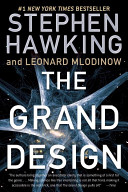The Creation of Carbon in Stars
The first step occurs when older stars start to accumulate helium, which is produced when two hydrogen nuclei collide and fuse with each other. This fusion is how stars create the energy that warms us. Two helium atoms can in turn collide to form beryllium, an atom whose nucleus contains four protons. Once beryllium is formed, it could in principle fuse with a third helium nucleus to form carbon. But that doesn't happen, because the isotope of beryllium that is formed decays almost immediately back into helium nuclei.
The situation changes when a star starts to run out of hydrogen. When that happens the star's core collapses until its central temperature rises to about lO0 million degrees Kelvin. Under those conditions, nuclei encounter each other so often that some beryllium nuclei collide with a helium nucleus before they have had a chance to decay. Beryllium can then fuse with helium to form an isotope of carbon that is stable. But that carbon is still a long way from forming ordered aggregates of chemical compounds of the type that can enjoy a glass of Bordeaux, juggle flaming bowling pins, or ask questions about the universe. For beings such as humans to exist, the carbon must be moved from inside the star to friendlier neighborhoods. That, as we've said, is accomplished when the star, at the end of its life cycle, explodes as a supernova, expelling carbon and other heavy elements that later condense into a planet.
This process of carbon creation is called the triple alpha process because "alpha particle" is another name for the nucleus of the isotope of helium involved, and because the process requires that three of them (eventually) fuse together. The usual physics predicts that the rate of carbon production via the triple alpha process ought to be quite small. Noting this, in 1952 Hoyle predicted that the sum of the energies of a beryllium nucleus and a helium nucleus must be almost exactly the energy of a certain quantum state of the isotope of carbon formed, a situation called a resonance, which greatly increases the rate of a nuclear reaction. At the time. no such energy level was known, but based on Hoyle's suggestion, William Fowler at Caltech sought and found it, providing important support for Hoyle's views on how complex nuclei were created.
Hoyle wrote, "I do not believe that any scientist who examined the evidence would fail to draw the inference that the laws of nuclear physics have been deliberately designed with regard to the consequences they produce inside the stars." At the time no one knew enough nuclear physics to understand the magnitude of the serendipity that resulted in these exact physical laws. But in investigating the validity of the strong anthropic principle, in recent years physicists began asking themselves what the universe would have been like if the laws of nature were different. Today we can create computer models that tell us how the rate of the triple alpha reaction depends upon the strength of the fundamental forces of nature. Such calculations show that a change of as little as 0.5 percent in the strength of the strong nuclear force, or 4 percent in the electric force, would destroy either nearly all carbon or all oxygen in every star, and hence the possibility of life as we know it. Change those rules of our universe just a bit, and the conditions for our existence disappear!
Notes:
Requires a very delicate balance of natural laws. If the strong nuclear force were to change by as little as 0.5 percent, there would be no carbon or oxygen in the Universe.
Folksonomies: physics carbon stars universe laws of nature
Taxonomies:
/science/physics (0.376346)
/science (0.211693)
/technology and computing (0.186794)
Keywords:
helium nucleus (0.933332 (negative:-0.247312)), strong nuclear force (0.863167 (negative:-0.357514)), triple alpha process (0.762800 (negative:-0.498452)), beryllium nuclei collide (0.742155 (negative:-0.247312)), hydrogen nuclei collide (0.698883 (neutral:0.000000)), carbon (0.673428 (positive:0.180485)), helium nuclei (0.596722 (negative:-0.304448)), beryllium nucleus (0.537987 (neutral:0.000000)), flaming bowling pins (0.535050 (neutral:0.000000)), helium atoms (0.530910 (neutral:0.000000)), triple alpha reaction (0.529561 (positive:0.288252)), certain quantum state (0.524182 (neutral:0.000000)), strong anthropic principle (0.517819 (neutral:0.000000)), exact physical laws (0.513723 (negative:-0.419304)), nuclear physics (0.485923 (negative:-0.196392)), nuclei encounter (0.462209 (negative:-0.247312)), complex nuclei (0.443228 (positive:0.516307)), principle fuse (0.442386 (neutral:0.000000)), turn collide (0.429931 (neutral:0.000000)), natural laws (0.413902 (positive:0.924049)), delicate balance (0.413838 (positive:0.924049)), older stars (0.404113 (neutral:0.000000)), carbon production (0.403498 (negative:-0.498452)), carbon creation (0.401160 (neutral:0.000000)), friendlier neighborhoods (0.400184 (negative:-0.597759)), isotope (0.391805 (positive:0.178305)), degrees Kelvin (0.390786 (negative:-0.277796)), long way (0.389879 (neutral:0.000000)), central temperature (0.387601 (negative:-0.277796)), heavy elements (0.385688 (neutral:0.000000))
Entities:
Hoyle:Person (0.899617 (positive:0.384817)), bowling:Sport (0.464033 (neutral:0.000000)), chemical compounds:FieldTerminology (0.463549 (neutral:0.000000)), Caltech:Organization (0.440903 (neutral:0.000000)), scientist:JobTitle (0.410106 (positive:0.222912)), William Fowler:Person (0.360226 (neutral:0.000000)), 0.5 percent:Quantity (0.360226 (neutral:0.000000)), 4 percent:Quantity (0.360226 (neutral:0.000000))
Concepts:
Helium (0.983419): dbpedia | freebase | opencyc
Nuclear fusion (0.867306): dbpedia | freebase
Neutron (0.857775): dbpedia | freebase | opencyc
Universe (0.829044): dbpedia | freebase
Anthropic principle (0.749682): dbpedia | freebase | yago
Atom (0.709832): dbpedia | freebase | opencyc
Hydrogen (0.701439): dbpedia | freebase | opencyc
Triple-alpha process (0.696307): dbpedia | freebase






